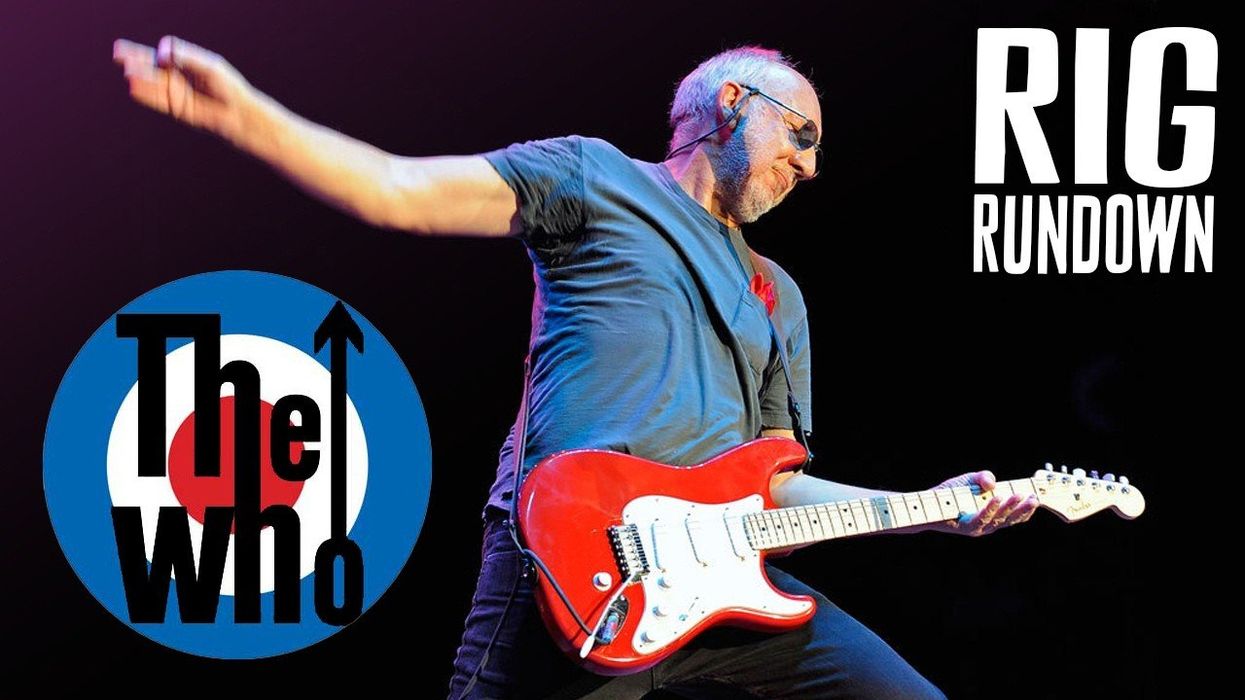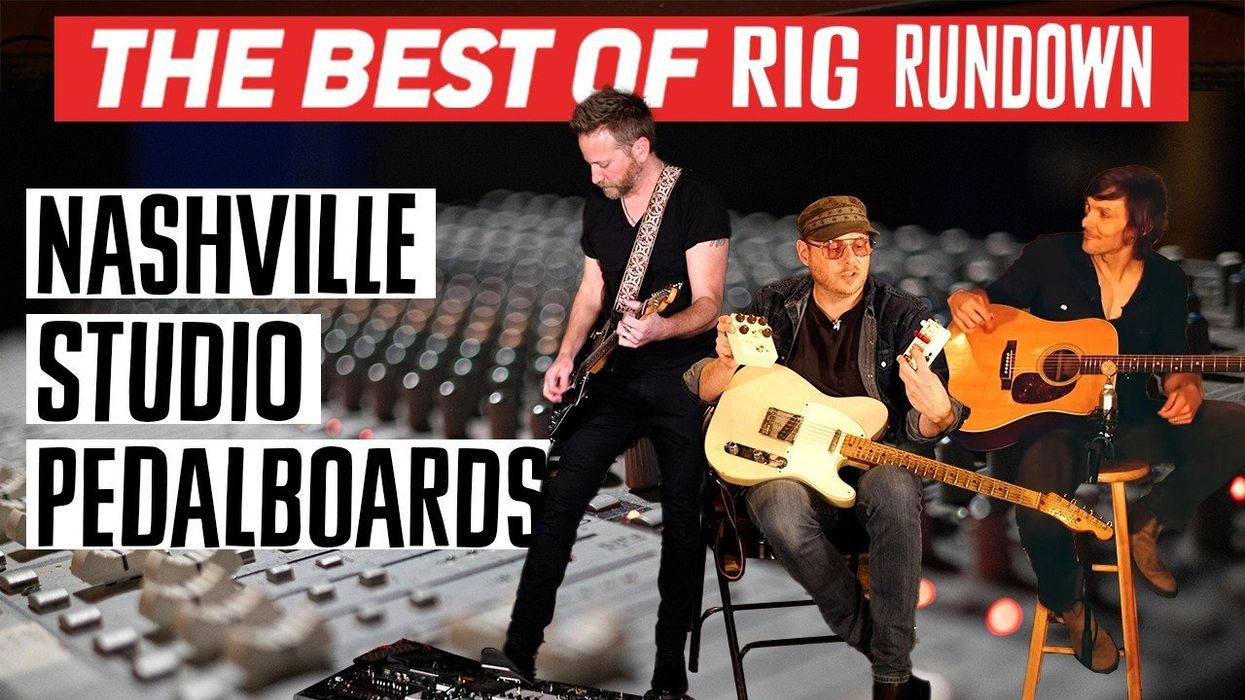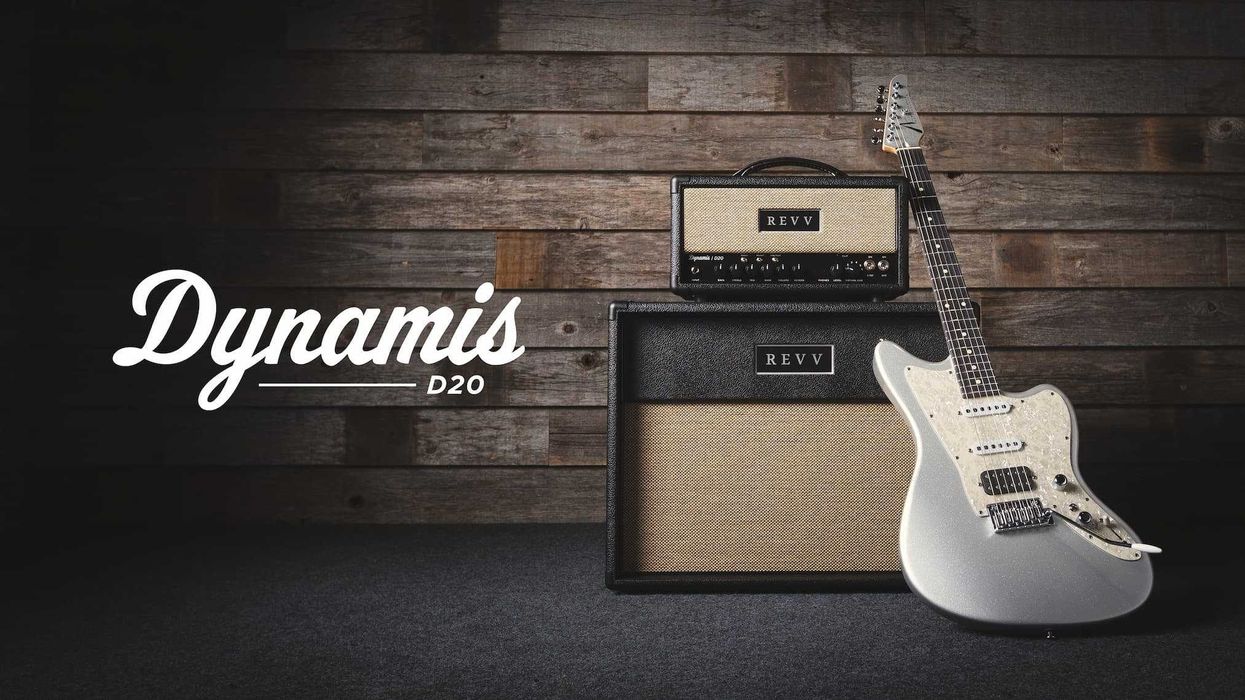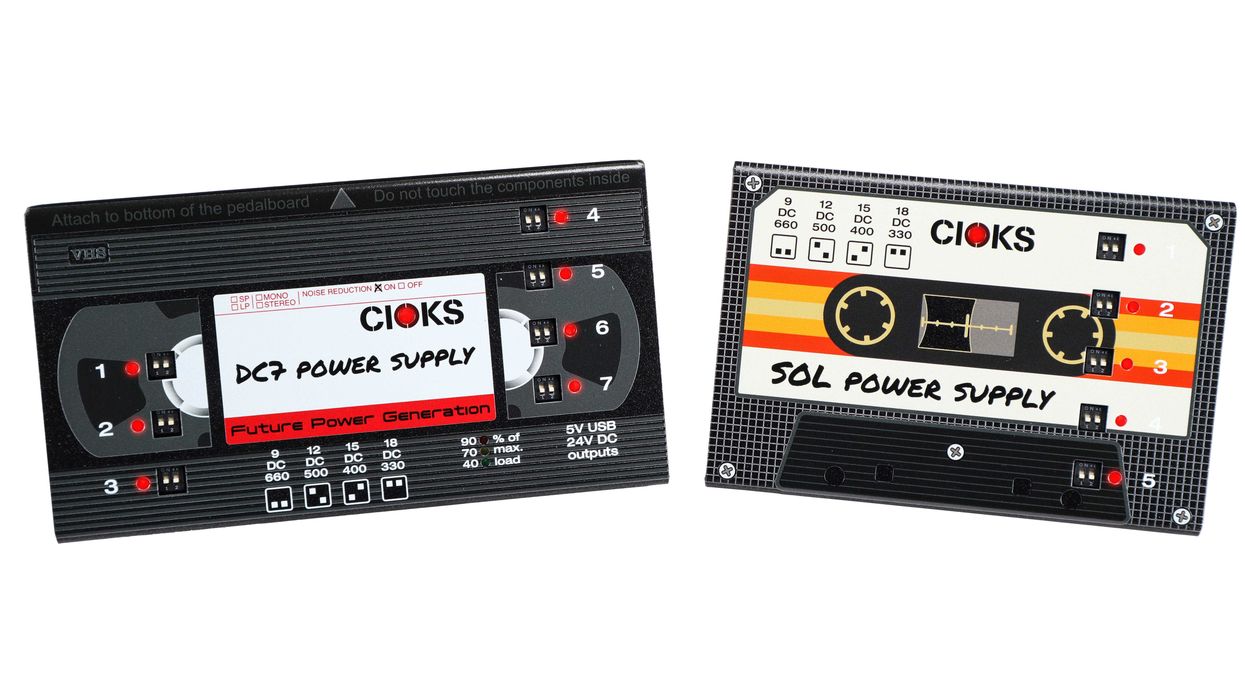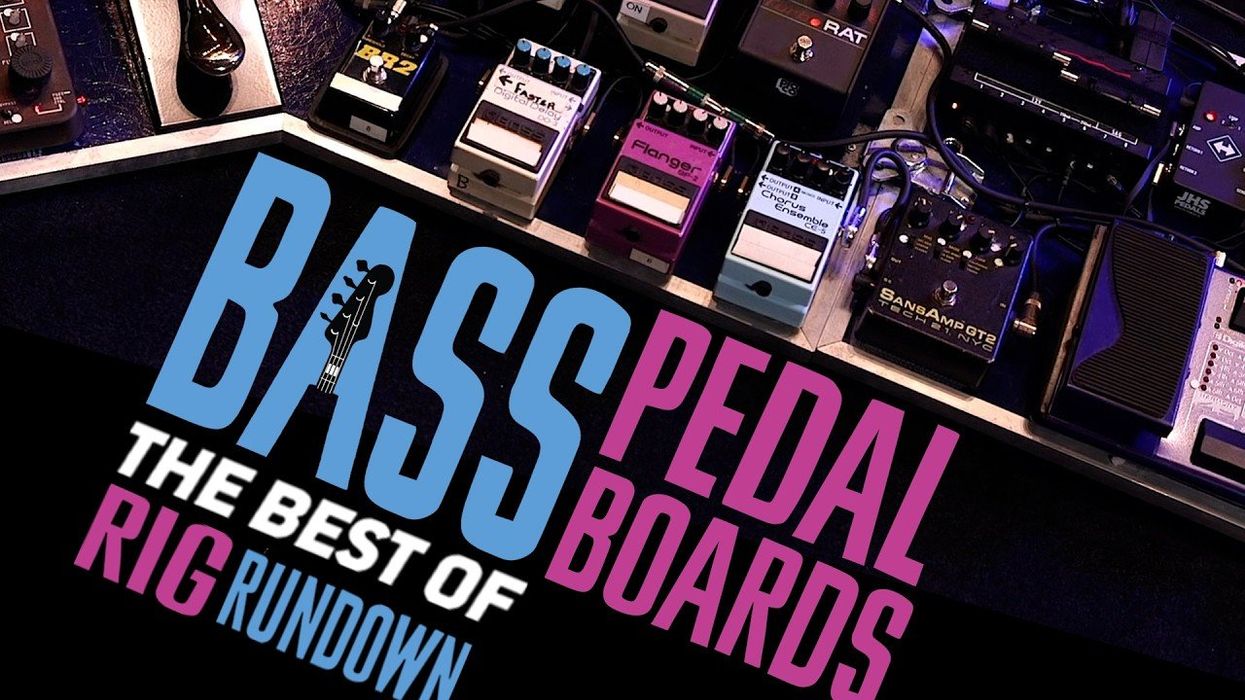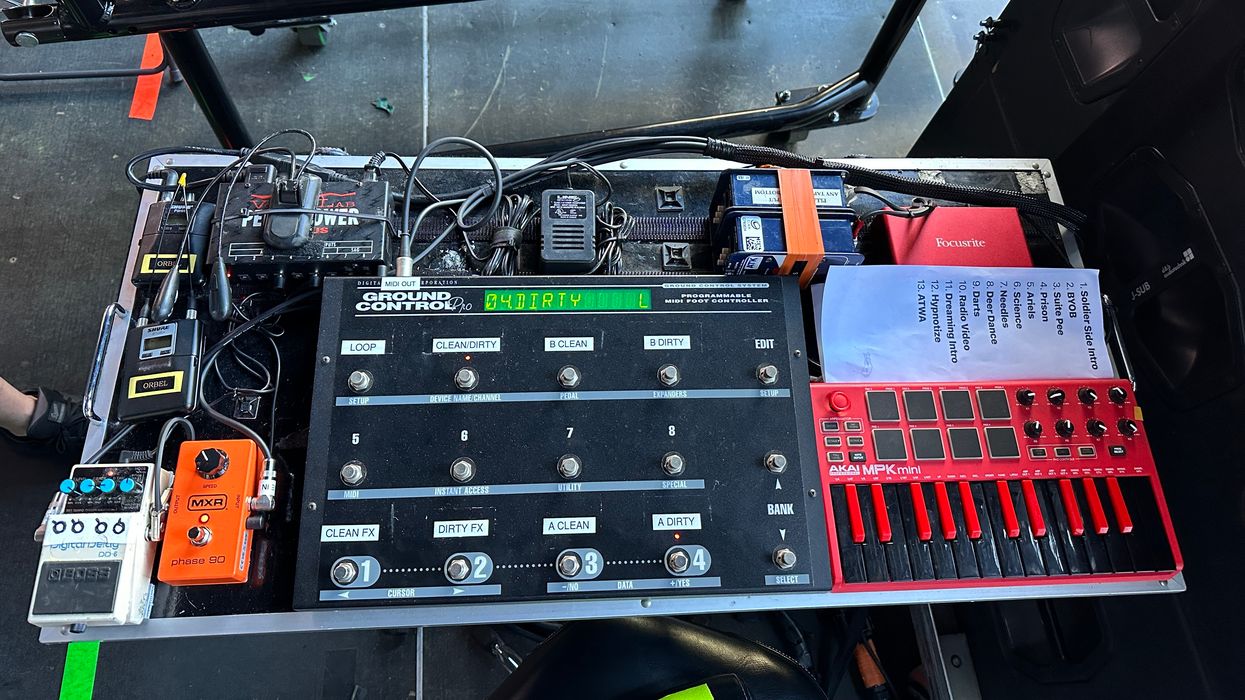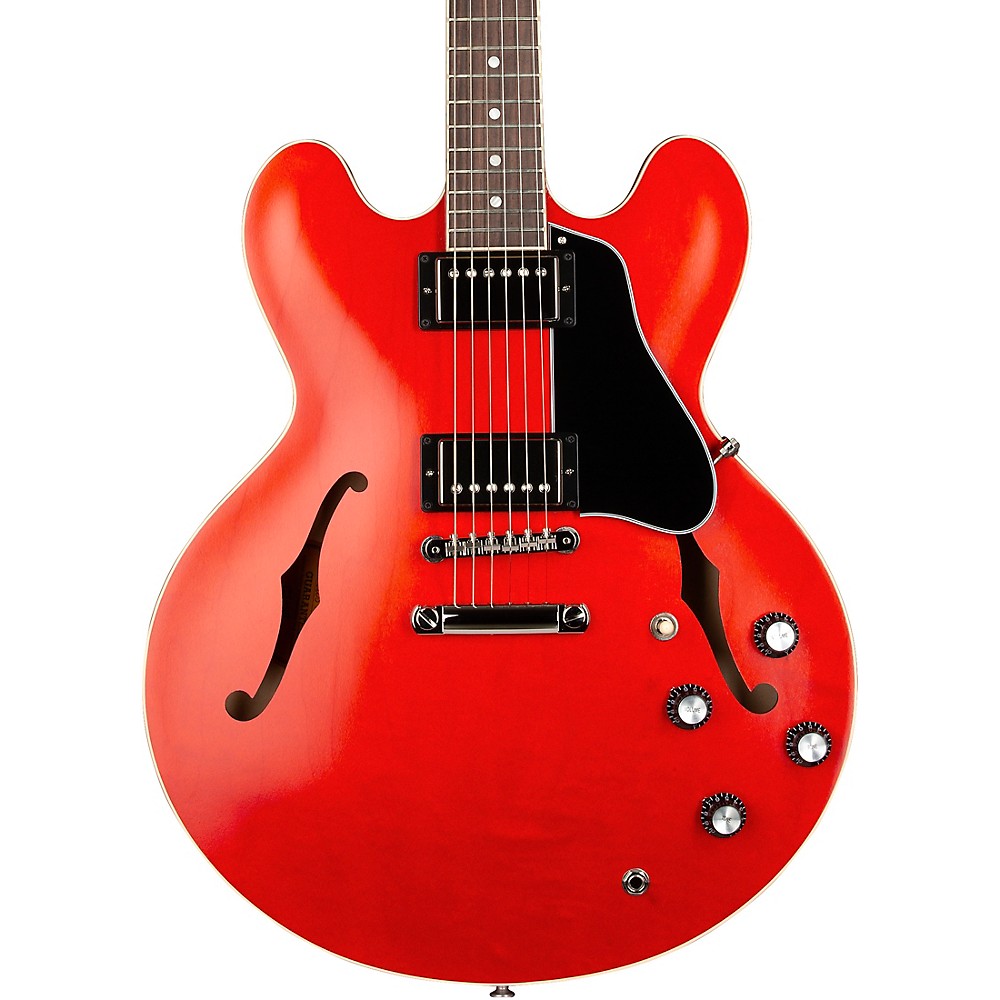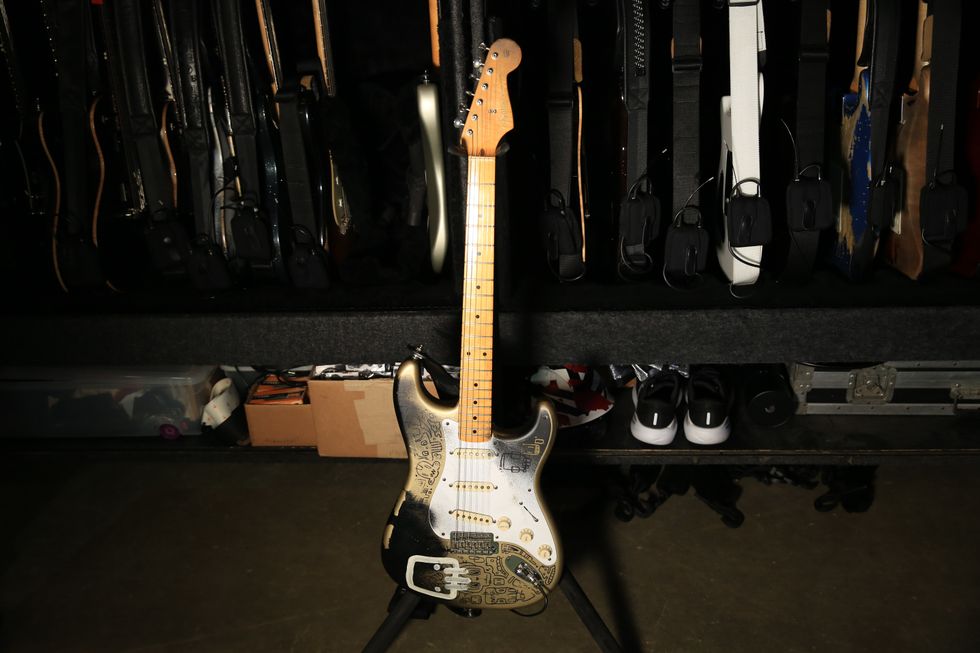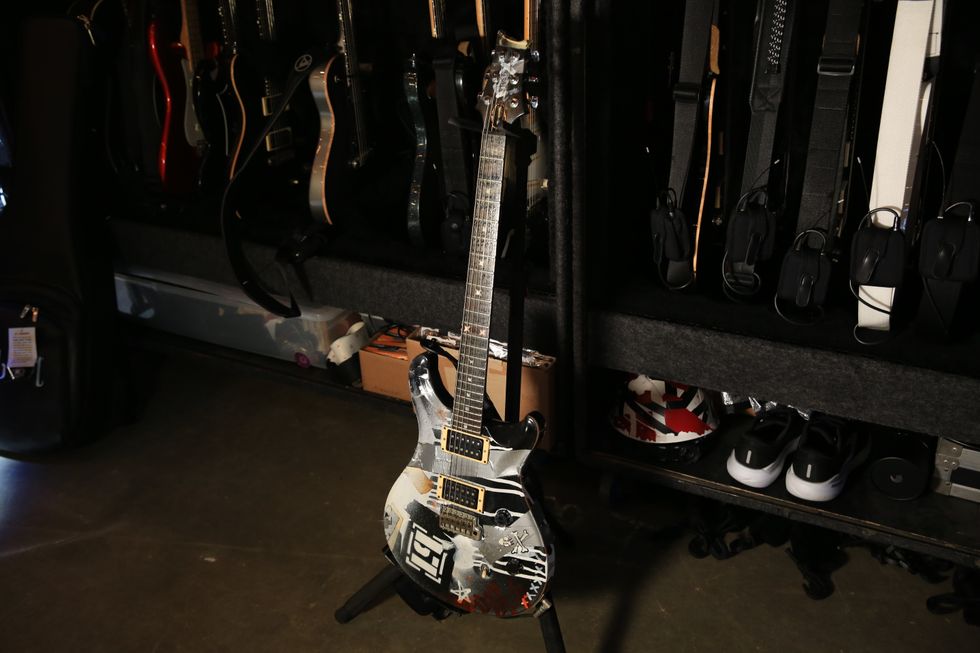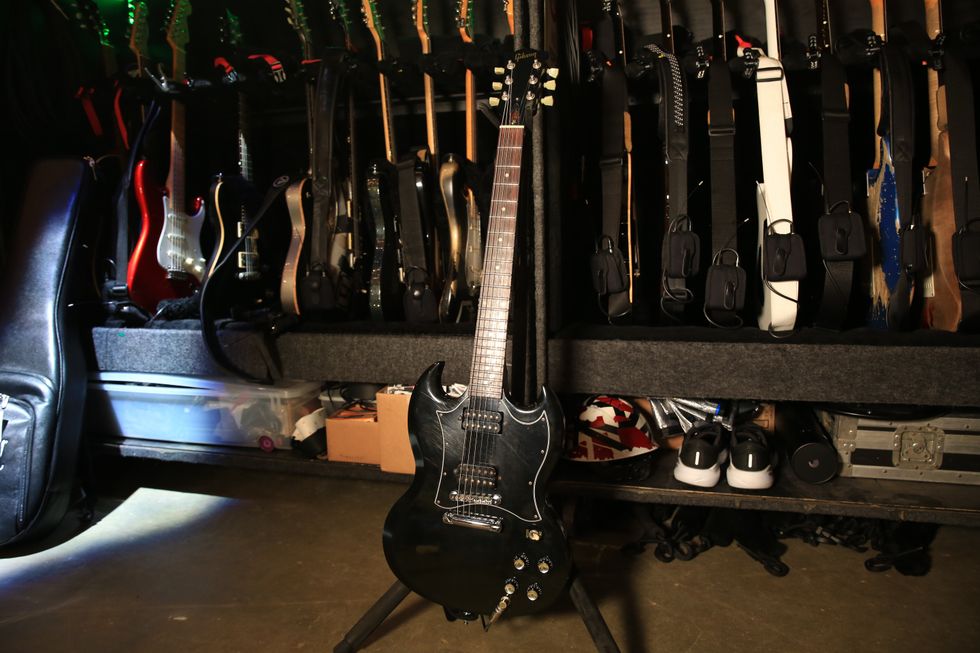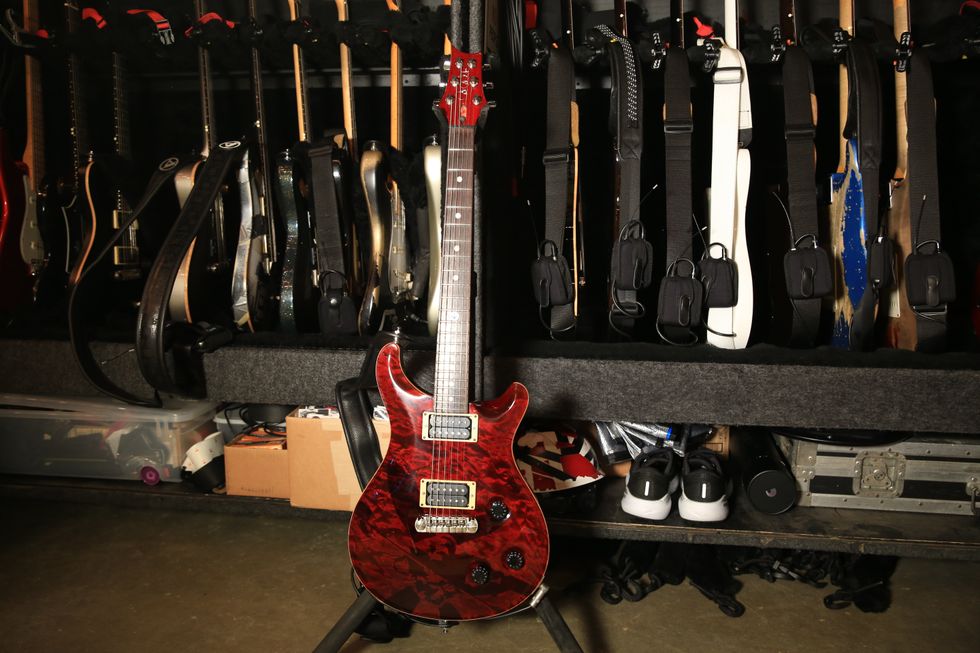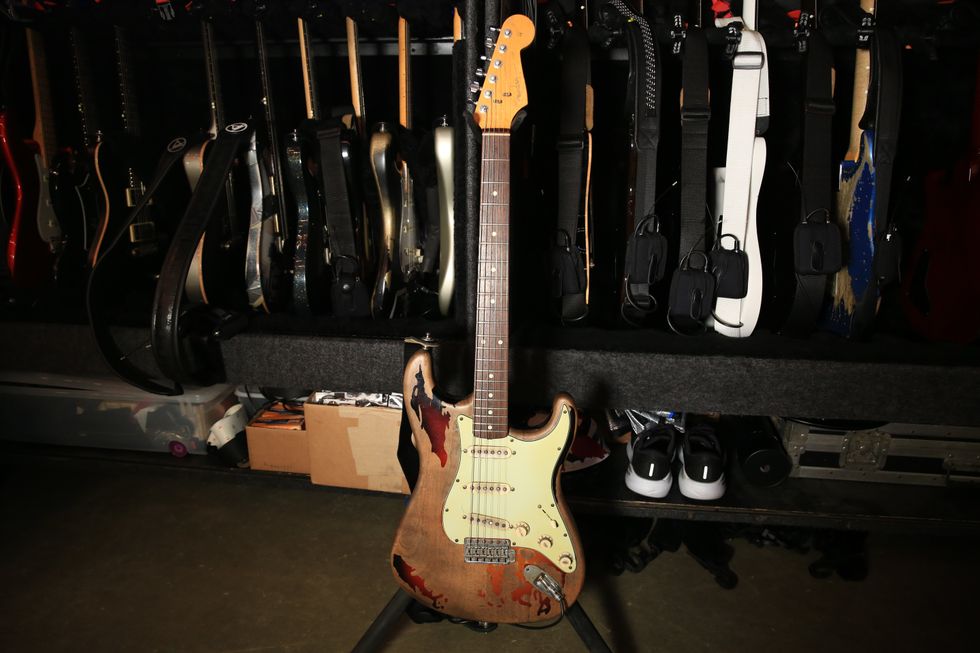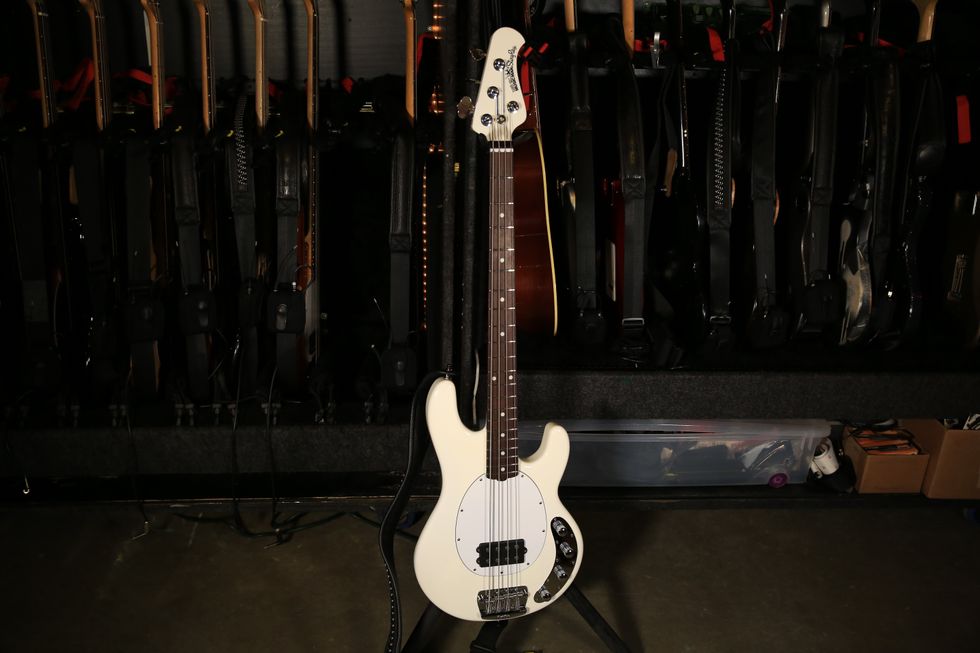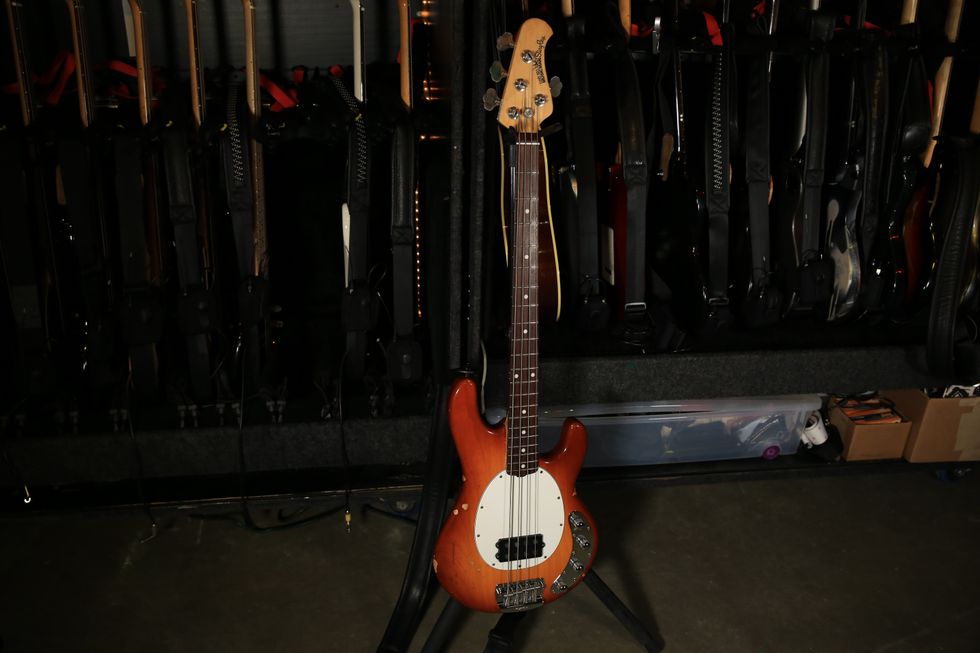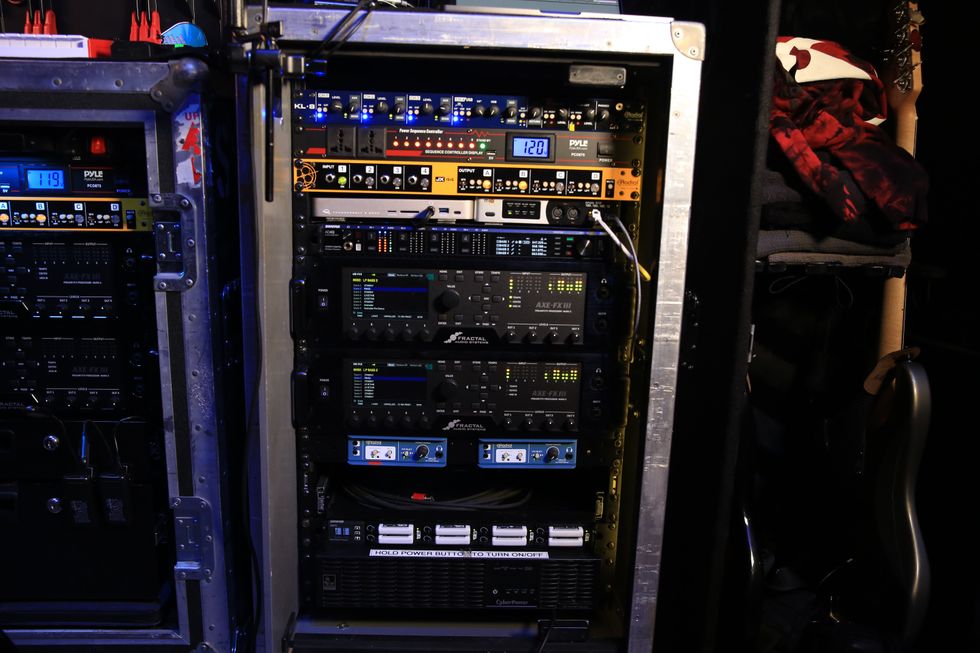The outlaw-country arena-rocker and his copilot Laur Joamets show off their Johnny Blue Skies setups.
You might think alt-country veteran Sturgill Simpson would need no introduction by this point in his career, but this year, he set out to reintroduce himself to the world—as Johnny Blue Skies. That’s the moniker he created for his new record, Passage du Desir, which was released in July on High Top Mountain. Simpson promised that the album was the first step in a new phase of his creative life; the next was the subsequent tour.
Simpson, looking his Waylon Jennings best, met up with Premier Guitar’s John Bohlinger before his headlining gig at Nashville’s Bridgestone Arena. Sporting a new-to-him Gibson ES-335 and an army-camo jacket, he told Bohlinger he’s not trying to be a star guitarist: “I’m trying to be a much less educated version of Bob Weir,” he grins. The star turn is for the Estonian guitarist Laur Joamets, who handles plenty of leads along with pedal steel.
The guitar duo took us through their Blue Skies-era gear, featuring an array of Magnatone amplifiers, guitars old and new, and the simplest pedalboard you’ll ever see on an arena stage.
Brought to you by D’Addario.Makin' Music with Macon Music

Simpson bought this 1962 Gibson ES-335 back in the fall of 2024 from Emerald City Guitars in Seattle. It was an exclusive build for Macon Music, a former store in Memphis, so Gibson added its beautiful headstock design, typically only found on L-5s. The only mod Simpson did was to flip the pickup magnets such that the two PAFs would be out of phase in the middle position, giving him a woody, acoustic-adjacent sound. (Simpson left his acoustics at home for this run.)
'56 Fender

Simpson’s refinished 1956 Fender Esquire is his longtime number one. This one features stainless steel frets, and the original bridge pickup has been rewound to clock in at just under 8k. An Analog Man Jim Weider Big-T holds down the neck position. It’s also got a homemade 4-way switching system. Simpson runs it with DR Strings (.010–.046).
Double Trouble

Simpson bought one of these Magnatone Panoramic Stereos in California and kept it as his bedroom amp. He got so used to playing through them that he had these made for the tour. The twin setup gives Simpson a mindblowing stereo-tremolo image.
One and Done

Simpson packed light for this year’s run. His board bears just a Peterson Stomp Classic tuner running into a Fulltone True-Path ABY-ST, which splits his signal to his two Magnatones. “I wouldn’t use a tuner if I didn’t have to,” he chuckles.
The LILY P4D beside the splitter lets him control his mic signal to cut interference from onstage noise.
Family Heirloom

Laur Joamets received this 1974 Fender Telecaster when he was 16 years old as a gift from his father—also a guitarist. It’s a sentimental gem, but unfortunately it requires a lot of TLC: Joamets’ guitar tech is locked in constant battle with it, on account of the truss rod hardly working. The electronics and hardware have been swapped and upgraded many times (Joamets wired in his preferred tone caps), and Simpson gifted Joamets a bridge pickup he says is from a ’52 reissue, while a Lollar Royal T lives in the neck position.
Fano Firebird

This time out, Joamets is favoring this Fano Guitars PX6, which has a swamp ash body with a maple neck and rosewood fretboard. He pulled out the stock P-90s and dropped in a humbucker gifted to him by his dad in the bridge, and a Lollar P-90 Staple pickup by the neck.
Joamets also brought along his black Fender Stratocaster, and for his pedal-steel duties, he leans on a Stage One pedal steel gifted to him “from the boss”—Simpson, not Springsteen. Sturgill bought it for Joamets in 2016 because he wanted his co-guitarist to learn and play pedal steel on the road. Joamets says he’s still learning today. It’s tuned to E9, and runs into one of his Magnatone amplifiers.
This Charming Amp

Joamets also runs a two-amp setup. His Magnatone Varsity Reverb handles the signal from his delay and reverb pedals, while the rest runs to the “Charmer,” a replica of Fender’s brown-panel Deluxes of the early ’60s, built by a friend of Joamets’ dad. He’s had the Charmer for a long time—when he moved to Nashville with it, he took out the tubes for the journey and stuffed the cabinet with clothes for maximum packing efficiency.
A Tale of Two Boards

For his main board, Joamets packs a little heavier than his boss. The platform, made by West Coast Pedal Board, carries a Peterson StroboStomp, Greer Amps Arbuckle Trem, sRossFX fuzz/overdrive, MXR Booster, T-Rex Replica, sRossFX germanium octave pedal, TC Electronic Viscous Vibe, Dunlop EP103 Echoplex, and Source Audio True Spring Reverb. An MXR Tap lets him tap in delay tempos.
His steel board is more spartan. The Stage One goes into a Peterson StroboStomp HD, then on to a Greer Black Tiger and Goodrich Sound Company volume pedal, before hitting the Magnatone.





